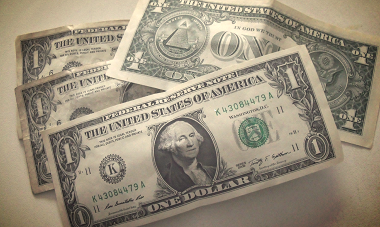
Loading...
28th November 2016

The financial market’s reaction to the election of Donald Trump brings to mind a saying attributed to the legendary Texan oil-well fire-fighter Red Adair:
“You can have it quick, you can have it good, you can have it cheap. Pick any two.”

Adair’s phrase neatly captures the essence of an impossible trinity, a problem which all too often bedevils economic policymakers.
In the few days since Trump’s election, the US equity market has moved higher, most likely anticipating that a combination of the promised lower tax rates and higher fiscal spending will support corporate profits. At the same time the yields on US government bonds have also risen – 10-year Treasury yields are approximately 50bp higher, suggesting the markets believe Trump will fix the extended US growth slump and thereby allow the Federal reserve to normalize interest rates.
To be fair, higher equity prices together with higher interest rates could also be interpreted as the markets pricing greater inflation risk rather than a higher rate of economic growth. This would be a plausible interpretation of the market movements were it not for the fact that real yields on US inflation protected bonds have also moved higher, the value of the US dollar has surged and gold prices have fallen sharply - all of which in combination strongly suggest that the markets are pricing higher real growth rather than higher inflation.
Trump is expected to make the return on US capital great again
While it is encouraging to see financial markets take such an upbeat view of Trump’s policies, it is worth remembering that Trump was not elected on a platform of boosting the returns to capital. Much of his campaign rhetoric was around the adverse consequences of immigration and foreign labour competition on the wages of American workers. By implication, Trump’s campaign was a promise to bring pricing power back to American labour.
Trump’s voters expect him to make the return on US labour great again
The financial markets expect higher corporate profits as well as a higher cost of borrowing and voters expect a higher cost of labour and all of this is expected to happen without any meaningful rise in inflation. Satisfying all of these expectations may not be quite an impossible trinity, but it is certainly going to be a stretch assignment.
In the decades of rising globalisation, the profitability of major multinational corporations has been boosted by their ability to: combine cheap capital (from the developed markets) with cheap labour (from the developing markets); sell goods to rich developed market customers, able to augment their spending habits with cheap debt; book the resulting profits in the jurisdiction offering the lowest rate of taxation. If Trump is to throw sand into the wheels of globalisation, then we should expect at least some of these props to corporate profitability to fall away. It is tough to imagine that re-establishing the pricing power for US labour can be achieved without at least some cost to the return on US capital and/or higher inflationary pressures.
Trump may ultimately be faced with a Red Adair style impossible trinity: higher wages, higher profits, higher real bond yields – pick any two.
Based on his campaign promises and his business background we would guess higher real bond yields will be a very distant third priority.
We are going to keep an open mind, but for now our central expectation remains that the Federal Reserve will find it necessary to hold real bond yields artificially low for another decade or so, to lighten the burden of previously accumulated debt while accommodating political realities. If so, either the higher nominal bond yields or the sanguine inflationary outlook may require rethinking.
We are already convinced that 2016 will become known as the year when the world shifted to a new geo-political paradigm and we are becoming increasingly persuaded that it will also mark the start of a new inflationary paradigm.
George Cooper, Chief Investment Officer Equitile Investments Ltd.
November 2016.